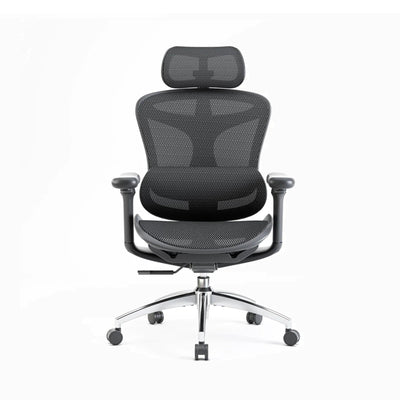
The demand for ergonomic chairs is skyrocketing. And when a product is sold like hotcakes, imposters are everywhere, eager to cash in on the trend.
These lookalikes may seem appealing with their flashy ads and tempting price tags, but they rarely serve their purpose.
So how do you separate the real from the faux? Here’s a quick how-to guide on how to spot fake ergonomic chairs.
What Makes a Chair Truly Ergonomic?
First of all, let’s decode the term “ergonomic.” Authentic ergonomic chairs are designed with your body in mind, aiming to support, adapt, and ease you through long hours of sitting. Here’s the checklist for the real deal:
- Customisable seat height and depth. Because no two bodies are the same.
- Lumbar support. A must-have for maintaining your spine’s natural curve.
- Reclining feature. Offers a sweet reprieve for your lower back.
- Adjustable armrest. Helps your arms rest easy, no matter your task.
- Breathable materials. Ensures comfort that lasts, even on marathon workdays.
If a chair doesn’t tick most of these boxes, it’s likely just pretending to be ergonomic.
Beware of Too-Good-to-Be-True Prices
As the saying goes, “you get what you pay for.” Authentic ergonomic chairs are an investment, with price tags normally ranging from $200 to $1,500. When a brand boasts premium features for a fraction of the cost? That’s a red flag. It’s probably cutting corners on quality.
On the flip side, don’t be fooled by knockoffs priced just a little under premium brands. These savvy fakes aim to look convincing but rarely deliver on their promises. Research the typical price range for the chair you’re eyeing and stay vigilant.
Stick to Trusted Brands and Sellers
Brands like Herman Miller, Steelcase, SIHOO, and SIDIZ have earned their reputations by consistently delivering comfort and quality. To be on the safe side and to ensure genuine ergonomic chair features, purchase directly from the official stores or authorised dealers.
If shopping online, exercise caution with third-party sellers on platforms like Amazon or eBay. Check their reviews, ratings, and customer feedback to confirm legitimacy.
Inspect the Craftsmanship
When checking the ergonomic chair buying guide, craftsmanship is often included in the checklist.
A genuine ergonomic chair shows distinct quality from every angle. Here’s what to look for:
- Flawless stitching: Uneven or frayed seams are telltale signs of a fake.
- Sturdy frame: Authentic chairs use durable materials like steel or reinforced plastic.
- Smooth mechanisms: Adjustable features should glide seamlessly, not stick or squeak.
- Substantial weight: Quality chairs feel solid, reflecting their robust construction.
Warranty Speaks Volumes
Reputable brands back their chairs with generous warranties, often lasting 5 to 12 years. This isn’t just a promise of durability—it’s a badge of confidence. Fakes, on the other hand, tend to skimp on warranty coverage, if they offer any at all.
Dive into Reviews
Customer reviews are usually reliable indicators to find out whether or not a product is legit. Look for reviews that mention comfort, durability, and adjustability. Be careful of products with overly generic praise—fake reviews are as common as fake chairs.
For added assurance, consult expert reviews from trusted industry sources as they provide details and they are more objective.
Try Before You Buy
Whenever possible, test the chair in person. Sit, adjust, and lean back. Pay attention to how it feels after just a few minutes. Does it support your posture? Are the controls intuitive? If it feels off, trust your instincts.
Research the Brand’s Backstory
Authentic ergonomic chair manufacturers flaunt their rich history of innovation and excellence. Spend time researching and learning about the brand. If credible information is scarce, it might be a sign to steer clear.
Some chairs boast certifications from organizations like BIFMA (Business and Institutional Furniture Manufacturers Association) or GREENGUARD. These badges signal that the chair meets rigorous safety and ergonomic standards. While not always mandatory, certifications add a layer of credibility.
Listen to Your Gut
If something feels off such as a suspiciously low price, vague descriptions, or pushy sales tactics, back off. Your intuition is often your best ally.
Think about your health and work efficiency. You will only pay one time for an excellent chair but you can use it for a very long time. By knowing what to look for, you can avoid gimmicks and ensure your choice is one that supports and improves your well-being.













